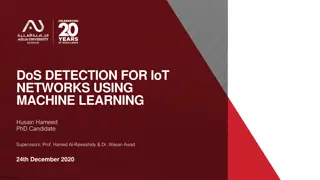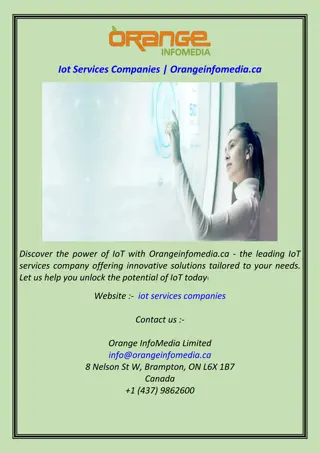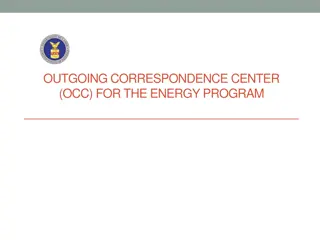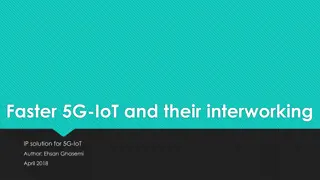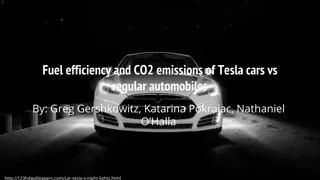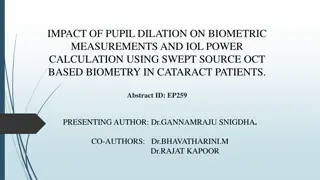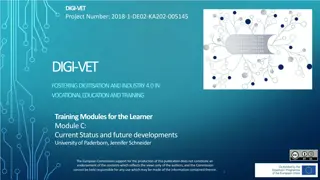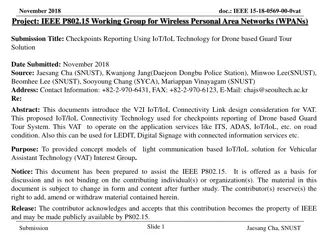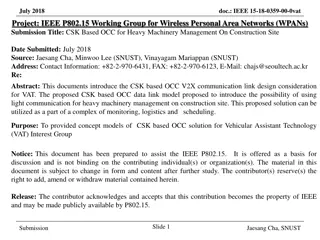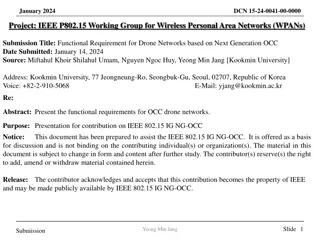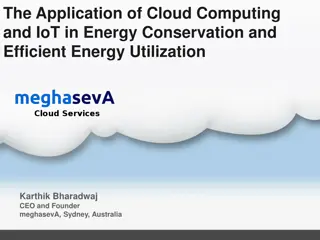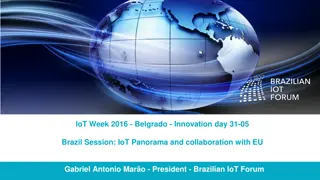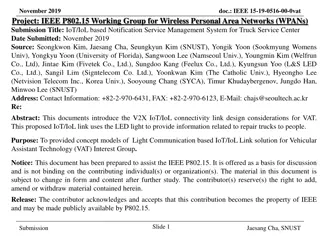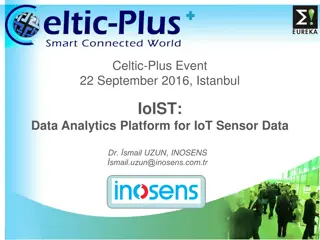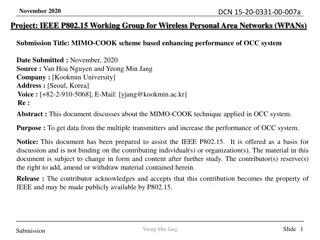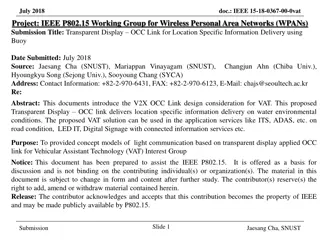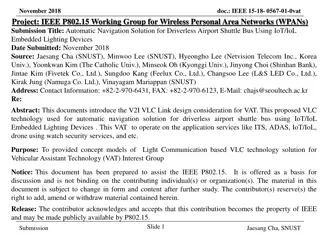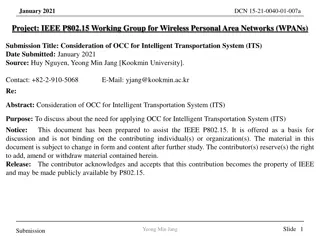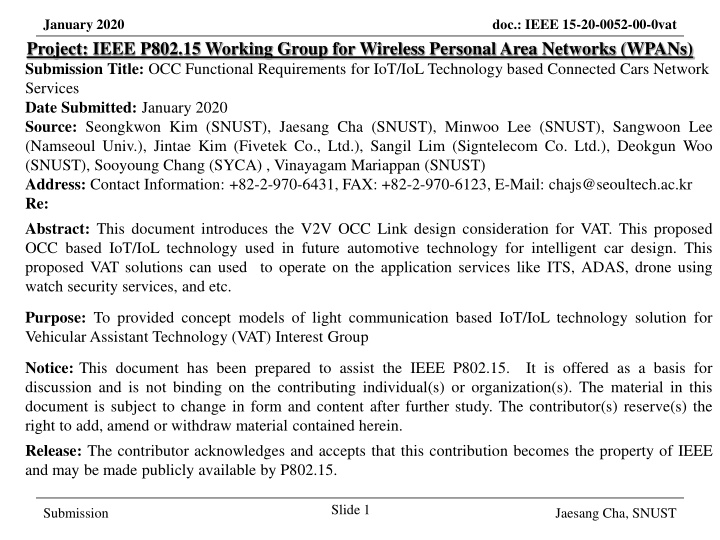
OCC Functional Requirements for IoT/IoL Technology in Connected Cars
Explore the OCC functional requirements for IoT/IoL technology in connected cars, focusing on V2V communication and intelligent car design to enhance applications like ITS and ADAS with secure network services using light communication technology.
Download Presentation

Please find below an Image/Link to download the presentation.
The content on the website is provided AS IS for your information and personal use only. It may not be sold, licensed, or shared on other websites without obtaining consent from the author. If you encounter any issues during the download, it is possible that the publisher has removed the file from their server.
You are allowed to download the files provided on this website for personal or commercial use, subject to the condition that they are used lawfully. All files are the property of their respective owners.
The content on the website is provided AS IS for your information and personal use only. It may not be sold, licensed, or shared on other websites without obtaining consent from the author.
E N D
Presentation Transcript
January 2020 Project: IEEE P802.15 Working Group for Wireless Personal Area Networks (WPANs) Submission Title: OCC Functional Requirements for IoT/IoL Technology based Connected Cars Network Services Date Submitted: January 2020 Source: Seongkwon Kim (SNUST), Jaesang Cha (SNUST), Minwoo Lee (SNUST), Sangwoon Lee (Namseoul Univ.), Jintae Kim (Fivetek Co., Ltd.), Sangil Lim (Signtelecom Co. Ltd.), Deokgun Woo (SNUST), Sooyoung Chang (SYCA) , Vinayagam Mariappan (SNUST) Address: Contact Information: +82-2-970-6431, FAX: +82-2-970-6123, E-Mail: chajs@seoultech.ac.kr Re: Abstract: This document introduces the V2V OCC Link design consideration for VAT. This proposed OCC based IoT/IoL technology used in future automotive technology for intelligent car design. This proposed VAT solutions can used to operate on the application services like ITS, ADAS, drone using watch security services, and etc. doc.: IEEE 15-20-0052-00-0vat Purpose: To provided concept models of light communication based IoT/IoL technology solution for Vehicular Assistant Technology (VAT) Interest Group Notice: This document has been prepared to assist the IEEE P802.15. It is offered as a basis for discussion and is not binding on the contributing individual(s) or organization(s). The material in this document is subject to change in form and content after further study. The contributor(s) reserve(s) the right to add, amend or withdraw material contained herein. Release: The contributor acknowledges and accepts that this contribution becomes the property of IEEE and may be made publicly available by P802.15. Slide 1 Submission Jaesang Cha, SNUST
January 2020 doc.: IEEE 15-20-0052-00-0vat Contents Needs for Network Service Connectivity in Automotive Technology OCC Functional Requirements for Connected Cars Network Services Conclusion Slide 2 Submission Jaesang Cha, SNUST
January 2020 doc.: IEEE 15-20-0052-00-0vat Needs for Network Service Connectivity in Automotive Technology Needs Digital technology revolution makes the deep impact in the automotive industry to offer practically unlimited possibilities for a more pleasant and safe driving and travelling experience. Intelligent Cars is the future automotive technology, the means that the cars are able to Communicate, Connected and autonomous features. Aims to reduce accidents and make enjoyable moment on drive time by connecting vehicles with other vehicles, traffic systems, and moving objects. The network service connectivity has the challenges like connectivity lifecycle management, telecom service regulation, spectrum usage, cybersecurity and privacy for automotive industry. Basic Concept Propose to use the light spectrum and give advantages over telecom services management, telecom service regulation, spectrum usage, cybersecurity and privacy for automotive industry. Use the lighting infrastructure and camera system installed in the vehicle and road-way infrastructure to enable connectivity between V2I, V2N, V2V, V2D, etc. GOOGLE < Network Service Connectivity in Automotive Technology > on connectivity lifecycle Slide 3 Submission Jaesang Cha, SNUST
January 2020 OCC Functional Requirements for Connected Cars Network Services doc.: IEEE 15-20-0052-00-0vat Connected Cars OCC Functional Requirements for Network Services Flicker Free Optical Channel Model High Data Rate (1Mb/s and more ) Long Range ( more than 20 0meters) Intelligent Hanover Methods Fast Vehicle Detection and RoI Extraction Modulations : OOK, VPPM, Offset-VPWM, Multilevel PPM, Inverted PPM, Subcarrier PPM, DSSS SIK etc. Day-Night Communication Mode Supported LoS (Line of Sight), Shake correction Required Key OCC Components to Enable Connected Car Network Services Reducing processing time(Algorithm, HW Enhancement, etc.) and High performance camera (more then 60FPS or Burst Mode supported) Multi-Camera & Multi-Processor(It need to image stitching method) Single-Camera & Multi-Processor(It need to reduce processing time) Line Tracking/RoI Segmentation(Hough, AdjustThresold, etc.) Key point Extraction Algorithm(FAST, SURF, etc.) < IoT/IoL Technology based OCC Link for Connected Cars > Vehicle Backlight and Back-side camera support to back-side network Slide 4 Submission Jaesang Cha, SNUST
January 2020 doc.: IEEE 15-20-0052-00-0vat Conclusion Proposed the OCC based IoT/IoL technology used in future automotive technology for intelligent car design. The modern days vehicle driving provide higher traveling speed so the design of connected car need to enable high data rate, high mobility performance, and long range are considered as important issue in vehicular communications. Connected Cars IoT/IoL links need to consider the single-camera & multi- processing unit or multi-camera & multi-processing unit, High FPS Camera, Motion and Vehicle Camera Shake correction and etc. to provide effective communication between vehicle to vehicle, vehicle to infrastructure, etc. Slide 5 Submission Jaesang Cha, SNUST

